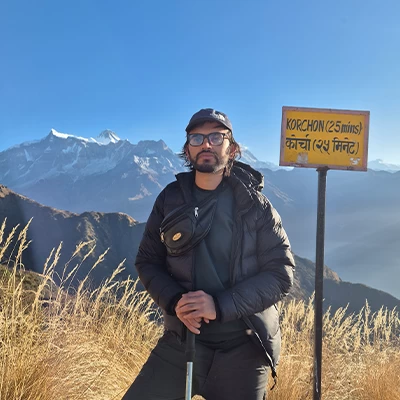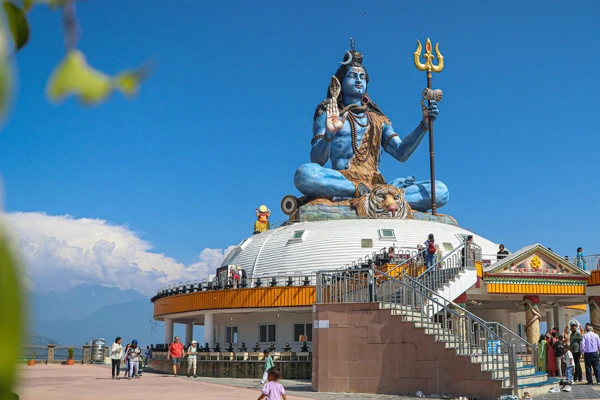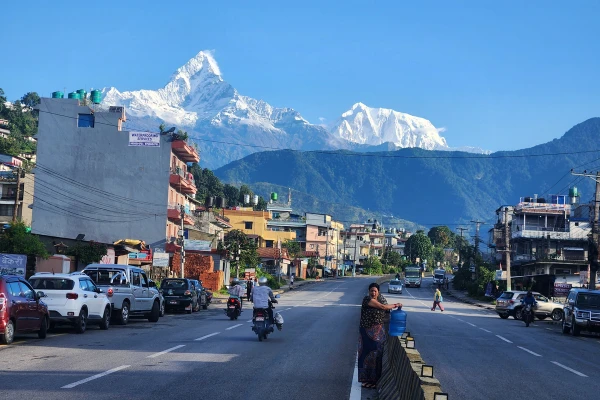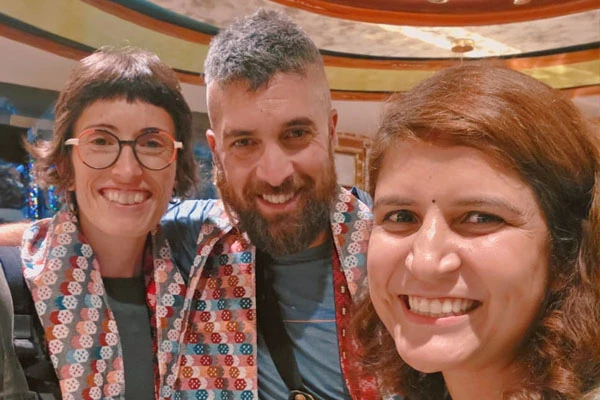The Cultural Tapestry of the Manaslu Region
The Manaslu region is more than a trekking route—it is a living museum of Himalayan civilization, where history, faith, and survival intertwine in the shadow of the world’s eighth-highest peak. Unlike Nepal’s more commercialized trails, Manaslu remains a sanctuary of ancient Tibetan Buddhism, pre-medieval trade routes, and ethnic traditions that have resisted the erasure of modernity.
The region surrounding the Manaslu Trek is deeply infused with Tibetan culture. From the food on your plate to the clothes locals wear and the spiritual practices they follow. You see, everything reflects a rich tapestry of Tibetan tradition. As you journey along the trail, you will encounter ancient Buddhist monasteries perched on hillsides. You will pass through colorful prayer flags fluttering in the wind and intricately carved mani walls lining the path.
The people here have preserved their heritage for generations, and their way of life remains beautifully intertwined with their faith. This deep cultural connection is more than just a backdrop. It is what makes this trek not just a scenic adventure but a soul-stirring journey through a living, breathing culture.
The People: Ethnic Groups & Traditions
The Manaslu region is a living mosaic of cultures, where ancient ethnic identities have been preserved in isolation by the mountains that surround you. Here, the Gurungs trace their ancestry to Tibetan warrior clans, the Tamangs guard traditions of shamanism and craftsmanship, and Tibetan refugees keep alive rituals banned across the border. Each group carries distinct dialects, festivals, and ways of life. The Gurung's harvest dances and the Tamang's intricate metalwork all share a common bond. To walk through Manaslu's villages is to step into an unbroken chain of tradition stretching back centuries.
The Gurungs, Tamangs, and Tibetans
Long before Nepal was unified under Prithvi Narayan Shah in the 18th century, the Manaslu region was a patchwork of independent tribal kingdoms. The Gurungs, known for their legendary role as Gurkha warriors, migrated from Tibet over a thousand years ago, bringing with them shamanistic Bon practices that later blended with Buddhism. Their villages like Lho and Prok, still retain Gurung dialects, traditional Ghatu dances, and metalcraft skills passed down through generations.
The Tamangs, meaning "horse traders," were once part of the powerful Tibetan Kyidong Kingdom. Their history is etched into Manaslu’s trails—ancient salt trade routes that connected Tibet to Nepal’s lowlands. Even today, Tamang villages like Philim and Tatopani are enrich with intricately carved wooden windows and stone grain mills, remnants of their artisanal heritage.
Local Customs and Hospitality
In the remote villages of the Manaslu Circuit, hospitality is sacred. For generations, the harsh Himalayan environment has forged a culture where every traveler is a guest, and every guest is a responsibility. Unlike commercialized trekking routes where interactions feel transactional here; hospitality flows from ancient codes of honor—Tibetan, Gurung, and Tamang traditions that treat visitors as temporary family members.
Homes are designed to welcome with low doorways that force even kings to bow. The rituals are precise: a white silk scarf (khata) is offered with both hands to welcome you. Your cup is refilled before it empties, and refusal of food is seen as an affront to the household’s karma.
Prayer Flags, Mani Walls, and Their Significance
Prayer flags are tattered rectangles of blue, white, red, green, and yellow silk that snap in the Himalayan winds. These are not mere decorations but spiritual transmitters; Buddhists believe the wind carries their inscribed prayers—"Om Mani Padme Hum." The colors mirror the elements: blue for sky, white for air, red for fire, green for water, and yellow for earth. Near passes like Larkya La, strings of new flags flutter beside faded ones.
Equally sacred are the mani walls, assembled from stones carved with mantras and deities. These are not walls at all, but karmic libraries. Each stone a prayer placed by pilgrims over centuries. To walk beside one is to trace the fingerprints of devotion; tradition dictates you circle them clockwise, letting your sleeve brush the carvings to absorb their blessings.
Together, these silent sentinels transform the trail into a pilgrimage. As a lama in Lho explained, "The mountains are our temple. The flags are our choir. The mani stones are our scriptures."
Villages and Their Unique Heritage
The Manaslu Circuit is not just a trail—it is a journey through living history, where each village tells its own story through stone houses, prayer wheels, and the faces of its people. Unlike commercialized trekking routes, the settlements here remain untouched by mass tourism, preserving traditions that date back centuries, if not millennia.
Sama Gaon: A Tibetan-Influenced Village
Altitude: 3,530m | Ethnicity: Tibetan Refugees & Bhotias
Nestled beneath the towering face of Manaslu, Sama Gaon feels like a place forgotten by time. The village revolves around the Sama Gompa, a 17th-century monastery where red-robed monks perform daily rituals to protect travelers crossing the Larkya La pass. Inside, butter lamps flicker over ancient thangkas (scroll paintings).
Many elderly villagers still remember the Tibetan salt trade—when yak caravans carried pink Himalayan salt from the Changthang Plateau to Nepal. Some homes still store hand-woven wool sacks once used to transport salt, now repurposed as rugs.
Lho & Its Majestic Monastery (Rachen Gompa)
Altitude: 3,180m | Ethnicity: Tamang & Tibetan
Lho’s crown jewel is the Rachen Gompa, a sprawling complex with gold-plated roofs that glow at sunrise. Built in the 1950s by Tibetan refugees, its architecture mimics the Potala Palace in Lhasa. The monastery houses a sacred statue of Avalokiteshvara (Chenrezig) said to have been carried from Tibet on a yak’s back.
On a rock near the village, locals point to a giant indentation believed to be a Yeti’s handprint. Elders say the creature once protected Lho from bandits, and to this day, they leave tsampa (roasted barley flour) as offerings.
Samdo: Life Near the Tibetan Border
Altitude: 3,875m | Ethnicity: Tibetan Refugees
Just 8km from the Tibetan border, Samdo is the last permanent settlement before Larkya La. Many residents are former traders who fled Tibet in the 1950s–60s. Their homes are built from mud bricks and yak dung, insulated against the brutal winters.
Before China sealed the border, Samdo was a hub for clandestine trade—Chinese thermoses, Tibetan carpets, and even Swiss watches smuggled through the mountains. Older men still wear traditional Tibetan chubas (wool robes) lined with hidden pockets once used to hide goods.
Hidden Gems: Lesser-Known Cultural Stops
Until 2008, Bihi was off-limits to outsiders. The village practices polyandry (one woman married to multiple brothers), a tradition from Tibet’s nomadic past. The Bihi Phedi Gompa has a "wind horse" mural believed to bring luck to travelers.
A 1,200-year-old stupa stands in Deng, marking it as a pilgrimage site since the time of Padmasambhava. Locals say the stupa was built to tame a demoness who once blocked the trail.
Namrung’s stone gate once served as a customs checkpoint for Tibetan traders. The village "headman" still keeps a ledger from the 1920s, recording taxes paid in salt, wool, and silver coins.
Festivals and Local Celebrations
The Manaslu region doesn’t just have festivals—it lives by them. Unlike commercialized performances staged for tourists, the celebrations here are raw, spiritual, and deeply communal, tied to harvests, lunar cycles, and centuries-old Buddhist prophecies. This is where gods dance, demons are vanquished, and entire villages become part of a living ritual.
Losar (Tibetan New Year) Celebrations
While Nepal follows the Bikram Sambat calendar, Manaslu’s Tibetan communities ring in the new year with Losar, a 15-day explosion of noise, color, and symbolism.
Gutor (Evil-Purging Night): Villagers burn effigies of scapegoats stuffed with old clothes and bad luck.
Changkol: The first sip of home-brewed barley beer is offered to the household shrine.
Lama Dances: In Lho and Samdo, monks wear paper-mâché yeti masks to scare away malevolent spirits.
Saka Dawa: Buddha’s Enlightenment
Saka Dawa marks Buddha’s birth, enlightenment, and death. In Manaslu, it’s observed with pilgrimages to sacred lakes, where devotees circumambulate for hours, murmuring mantras.
Silent Day: In Sama Gaon, no one speaks after sunset—a test of mindfulness.
Butter Lamp Oceans: Monasteries display thousands of lamps in intricate mandala patterns.
Traditional Architecture & Daily Life
In the Manaslu region, every stone, beam, and prayer flag tells a story of human ingenuity against nature’s extremes. This is a land where homes are fortresses, fields are sculpted into cliffs, and daily routines follow centuries-old rhythms untouched by modernity.
Stone Houses and Terraced Farms
Homes here are not just shelters—they are multi-generational strongholds, designed to withstand earthquakes, avalanches, and winters. Teahouses are not just pit stops—they are village living rooms, where gossip, politics, and folk tales are exchanged over endless cups of butter tea.
At 3,200m, farmers grow buckwheat, barley, and potatoes on slopes so steep that yaks are tied to ropes to plow them.
Teahouse Culture: Food and Social Customs
Teahouses are not just places to eat; they are the beating heart of village life. You will gossip, trades are made, friendships are forged, and weary trekkers are folded into the rhythm of mountain existence. Unlike the commercial lodges of Everest or Annapurna, Manaslu’s teahouses remain family-run sanctuaries.
The cuisine of the Manaslu region is a testament to human resilience. This is food designed to fuel bodies through sub-zero temperatures and grueling mountain passes.
Meals revolve around calorie-dense staples like tsampa (roasted barley flour). Tsampa can be mixed with tea or carried dry in pouches by shepherds. Thukpa is another hearty noodle soup brimming with hand-pulled noodles, dried yak meat, and whatever hardy vegetables can grow at altitude. The crispy Tibetan meat pies called sha phaley offer portable sustenance, their flaky dough stuffed with minced yak and cabbage.
Even the way Tongba (barley beer) is sipped through bamboo straws from shared vessels speaks to the region's communal spirit. This is not restaurant food but rather the accumulated wisdom of generations who learned to transform meager mountain resources into meals.
Spiritual Encounters: Meeting Monks & Locals
The true magic of the Manaslu Circuit lies not in its towering peaks, but in its people—the monks who chant ancient mantras into the wind, the grandmothers spinning wool while humming folk songs, and the children who giggle as they teach you Tibetan phrases. This is where travel becomes pilgrimage, and strangers become keepers of shared stories.
In these sacred spaces, learning to spin prayer wheels clockwise "to avoid hurting the mantras." Villages unveil the raw beauty of daily life, where families gather in smoke-filled kitchens.
Each encounter leaves an indelible mark, whether it is a monk's lesson on humility. These moments transcend tourism, offering instead a rare glimpse into a world where faith, folklore, and survival intertwine as seamlessly as the prayer flags fluttering over every village.
Responsible Tourism & Cultural Preservation
The Manaslu region stands at a crossroads, where ancient traditions collide with modern tourism. The choices travelers make today will determine whether this cultural sanctuary survives or becomes another commercialized trekking route. Here is how to walk these trails without leaving destructive footprints.
How to Respect Local Traditions
Monasteries: Remove shoes, avoid pointing feet at altars, and never touch murals (skin oils damage centuries-old pigments.)
Mani Walls & Chortens: Always walk clockwise, and don’t sit on them—these are prayers in stone, not photo props.
Supporting Community-Based Tourism
Homestays over Hotels: Villages like Prok and Chhekampar reinvest homestay fees into schools and clinics.
Local Guides: Hire Tibetan-speaking guides (they’ll translate deeper stories, like why Samdo’s black dogs are considered lucky).
Handmade, Not Mass-Produced: Buy yak wool socks from Samdo women’s cooperatives, not Chinese-made souvenirs in Kathmandu.
Conclusion
The Manaslu Circuit is more than a trek. It is a pilgrimage through a vanishing world. You will find a culture that has endured for centuries, clinging to the steep slopes of the Himalayas like the hardy barley in its terraced fields. This journey changes you. It is in the hands of the grandmother rolling butter tea between her palms, the monk’s chuckle when you mispronounce "Tashi delek."
What remains is a choice for those of us privileged to walk these trails. Will we be the generation that treated Manaslu as just another checkbox on an adventure bucket list? Or will we tread softly, listen deeply, and give back more than we take?
The mountains do not need us, but these villages, these stories, this irreplaceable tapestry. The greatest privilege is not the view from the pass, but the chance to help protect a world that will never exist in quite this way again. When you leave, you won’t just carry photos. You will carry the weight of memory, the warmth of shared hearths. Manaslu doesn’t change you. It reveals you to yourself and to the raw, beautiful truth of what it means to be human in a fragile, sacred world.





